Modern Japanese Garden Ideas: Transform Your Outdoor Space
Creating a modern Japanese garden can transform your outdoor space into a peaceful retreat. These gardens combine traditional elements with contemporary designs to provide a serene environment that promotes reflection and harmony. Whether you have a spacious yard or a cozy balcony, you can incorporate various features to capture the essence of Japanese aesthetics.
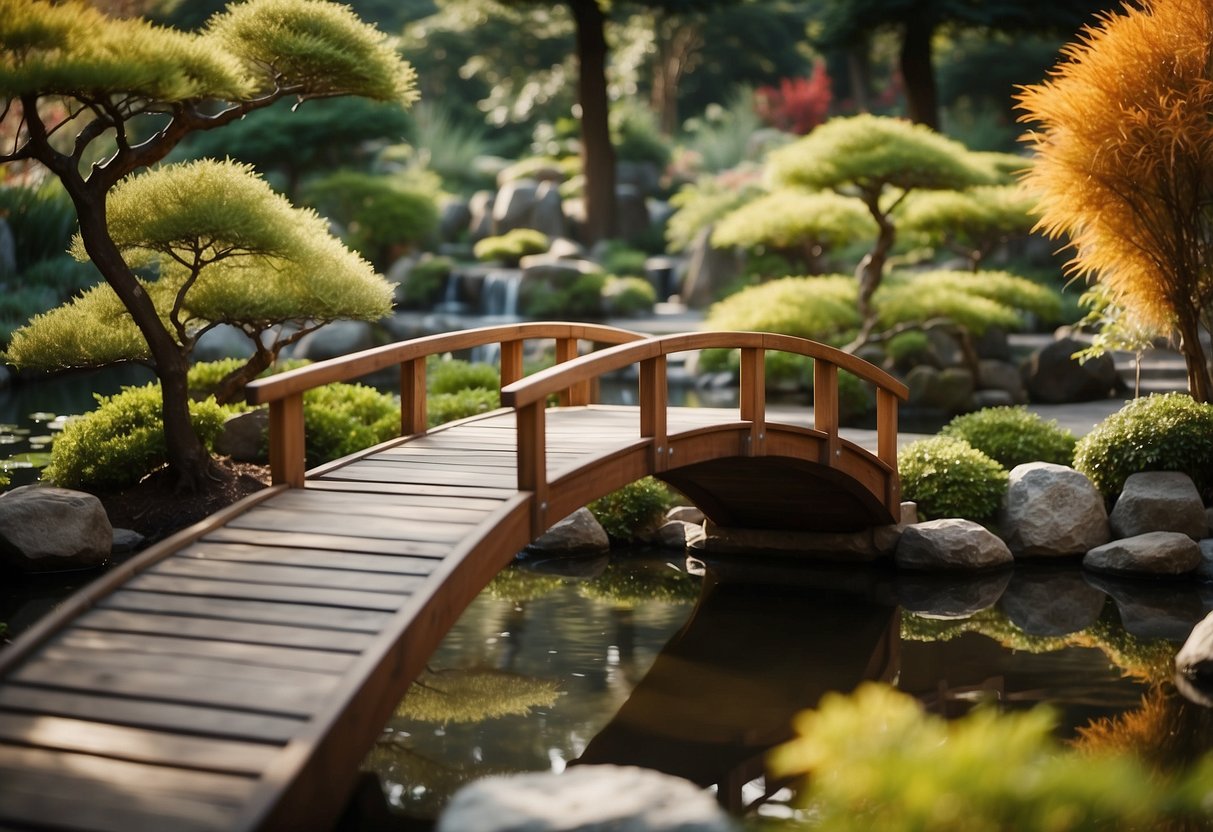
What makes a modern Japanese garden unique is the blend of nature, art, and simplicity. You’ll find that these gardens often use water, plants, and rocks to create a balanced and tranquil atmosphere. By carefully combining these elements, you can design a space that feels both timeless and current, offering a perfect escape from the hustle and bustle of daily life.
1) Zen Rock Garden

A Zen rock garden is a peaceful place where you can find calmness and focus. You only need a few elements to make one: rocks, sand, and maybe some simple plants.
Arrange the rocks carefully. You want them to look natural, like they’ve been there forever. Use sand around them and rake it into patterns. This can be very relaxing.
Adding a single stone column or a rock bench can make your garden even nicer. Keeping things simple is key. This way, your Zen garden becomes a perfect spot to relax.
2) Bamboo Water Fountain

Bamboo water fountains can add a peaceful element to your garden. They are usually made from natural bamboo and have a simple, elegant design.
Many of these fountains use a bamboo pipe called a kakei to deliver water. The sound of water trickling through bamboo creates a calming atmosphere.
For small gardens, you can use budget bamboo water features. These are easy to set up and maintain. Just place them in a water-filled container or pond and attach a pump.
3) Moss-covered Stones
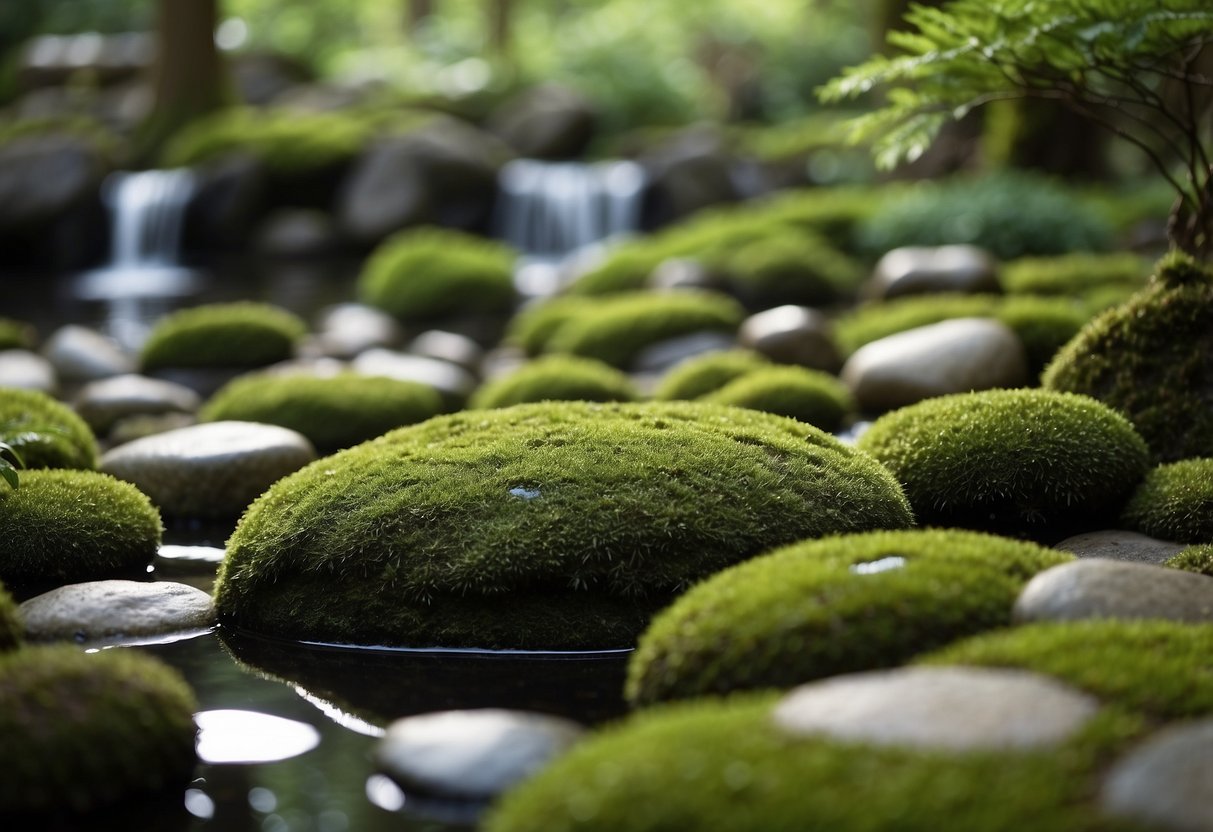
Moss-covered stones add a timeless look to your garden. The vibrant green of the moss contrasts nicely with the earthy tones of the rocks, creating a peaceful and natural feel.
In Japanese culture, moss symbolizes age and tranquility. It gives your garden a sense of history. You can easily bring this into your own garden by letting moss grow naturally on stones.
Adding moss-covered stones to your garden design can create depth and texture. They look great along pathways or near water features. For more ideas, check out these Japanese garden designs.
4) Shoji Screen Panels

Shoji screen panels can elevate the look of your modern Japanese garden. These traditional screens are made of wooden frames and translucent paper. They create a soft, diffused light effect.
You can use Shoji screens as sliding doors or room dividers. They provide privacy while maintaining a serene and open feel. Including Shoji screens in your garden design brings an element of authentic Japanese architecture.
Consider placing Shoji screens near a seating area. This will add a sense of intimacy and calm. For more inspiration, check out these Japanese garden ideas.
5) Stone Lanterns (Ishidoro)
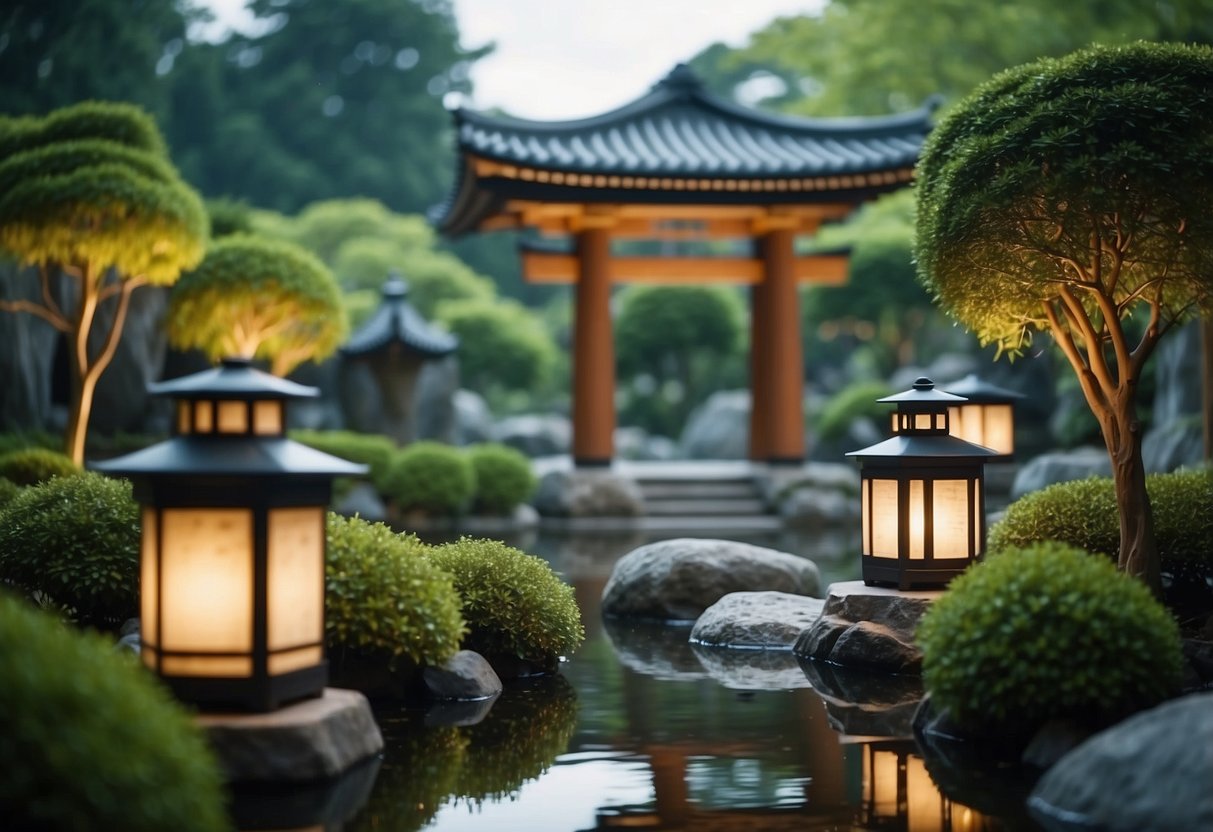
Stone lanterns, known as ishidoro, are iconic features in Japanese gardens. They add a touch of tradition and beauty to your space.
You can place these lanterns beside paths or ponds to create a serene atmosphere. They not only serve as decorative pieces but also symbolize guiding lights.
Integrating a stone lantern into your garden enhances its charm and provides a sense of calm and harmony.
Explore various styles of ishidoro to find the perfect fit for your garden.
6) Japanese Maple Tree (Acer palmatum)
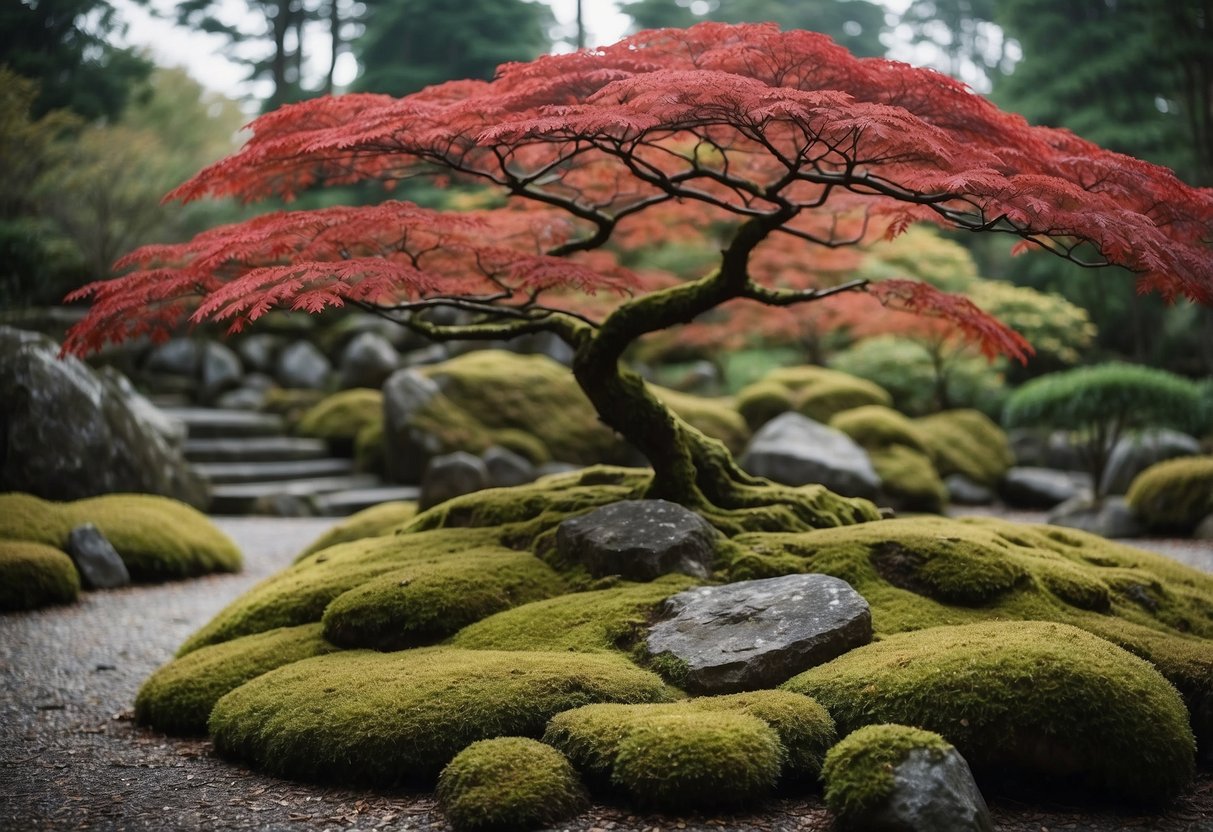
Japanese Maple Trees (Acer palmatum) are a stunning choice for any modern Japanese garden. These trees are known for their beautiful, lacy leaves that change colors with the seasons.
They range in size from small shrubs to trees up to 25 feet tall. They fit well in different garden styles, adding a striking visual centerpiece.
For colorful foliage, varieties like ‘Bloodgood’ and ‘Katsura’ are popular. They can be placed in prominent spots to draw attention. Japanese Maples also pair nicely with azaleas and hydrangeas for a vibrant garden display.
7) Gravel Pathways
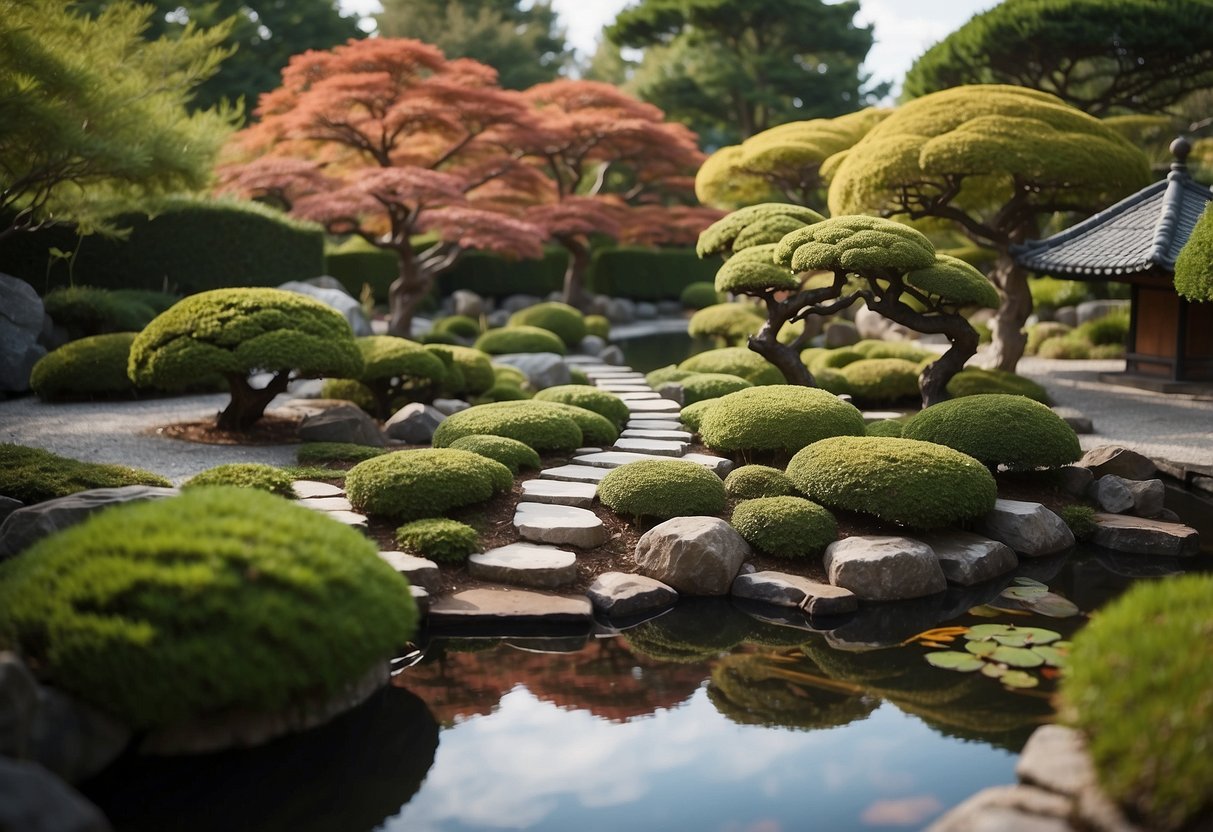
Gravel pathways add a touch of elegance to your Japanese garden. They are simple to maintain and blend well with other garden elements like stone lanterns and water features.
Walking on a gravel path provides a soothing crunch underfoot, enhancing the garden experience. Gravel can also help with drainage and prevent weeds from growing.
Choose fine gravel for a smooth, uniform look, or larger stones for a more rugged feel. Incorporate curves to create a natural, flowing design. For more ideas, you can explore Japanese garden pathways.
8) Koi Pond

A koi pond can add a serene touch to your modern Japanese garden. The gentle movement of koi fish in clear water brings a sense of peace and tranquility.
When designing your koi pond, consider integrating elements like stepping stones or a Zen rock garden. Rounded or bean-shaped ponds often provide a soothing and modern appearance.
Make sure your koi pond has strong filtration systems since koi fish produce a lot of waste. Adding plants around the edges can help create a natural look, mixing beauty with functionality.
9) Stepping Stones (Tobi-ishi)

Stepping stones, known as tobi-ishi, are a key part of many Japanese gardens. These stones are carefully placed to guide your path through the garden, encouraging you to walk slowly and mindfully.
The spacing of the stones is intentional. It dictates your walking pace, promoting a calm and reflective journey. Often combined with moss or gravel, stepping stones create a serene and minimalist layout.
10) Tsukubai Fountain

The Tsukubai Fountain is a classic feature in Japanese gardens. It’s usually made of stone and has a shallow basin for water.
A bamboo pipe, called a kakei, supplies the water that gently flows into the basin. You can often find a small water scoop laid across the top, ready for use.
This element not only adds beauty but also brings a sense of peace and tranquility to your garden. If you’re looking to create a serene spot, a Tsukubai Fountain is an excellent choice.
Design Principles Of Modern Japanese Gardens

Modern Japanese gardens focus on creating tranquil spaces through simplicity, harmony with nature, and the use of natural materials. These principles help transform the garden into a peaceful retreat.
Simplicity And Minimalism
Simplicity and minimalism are at the heart of modern Japanese gardens. Stripping away excess and focusing on clean, straightforward designs create tranquility.
Using fewer elements, such as a single large rock or a carefully placed lantern, avoids clutter and promotes calmness.
Raked gravel patterns, simple ponds, and limited plant varieties are common features. Every element is thoughtfully placed to enhance the overall sense of peace. This minimalist approach not only highlights the beauty of each component but also ensures that the space feels orderly and soothing.
Harmony With Nature
In modern Japanese gardens, harmony with nature is essential. Gardens are designed to blend seamlessly with the surrounding environment, whether in a city or a rural setting.
Plants, water features, and rocks are chosen to mirror natural landscapes and seasons.
Establishing a balance between various elements, such as placing water next to rocks or integrating native plants, keeps the garden feeling natural and cohesive. Including seasonal plants also ensures the garden looks beautiful year-round. This harmony fosters a deeper connection to nature and enhances the garden’s tranquil atmosphere.
Use Of Natural Materials
Using natural materials like wood, stone, and bamboo is another core principle. These materials not only blend well with the environment but also age gracefully, adding character over time.
Stone paths, bamboo fences, and wooden benches are common features.
Natural materials are chosen for their texture and color, which create a cohesive and organic look. Structures like pergolas or tea houses are often made from wood, providing sheltered areas that feel integrated into the garden. Prioritizing materials that weather naturally ensures the garden maintains its beauty and connection to nature for years to come.
For more ideas on how to incorporate these principles into your garden, check out these essential elements of Japanese garden design.
Elements Of Modern Japanese Gardens

Modern Japanese gardens combine tranquility and simplicity with elements like water features, zen garden areas, and thoughtful plant selections. These elements help create peaceful spaces that promote relaxation and mindfulness.
Water Features
Water plays a crucial role in Japanese gardens. Incorporating a koi pond can add a sense of serenity and movement to your garden. Koi fish are not only beautiful but also symbolize good luck and prosperity.
A bamboo fountain can enhance the calming atmosphere with the gentle sound of water flowing. Smaller water features like stone basins or simple fountains can be ideal for compact spaces, offering a sense of tranquility without requiring a large footprint.
Zen Garden Areas
Zen gardens, also known as karesansui or dry landscape gardens, focus on rocks and sand to represent natural elements like rivers, mountains, and seas. Raking the sand into patterns creates a meditative practice that promotes mindfulness.
Placing single stone columns or symmetrical rock arrangements can simplify the design and make your garden a peaceful retreat. Moss and gravel paths can add texture and depth, providing visual interest without overwhelming the space.
Bamboo And Plant Selection
Bamboo is a versatile plant that thrives in Japanese gardens. Its tall, slender stalks can create natural fences or privacy screens while adding an elegant touch. Bamboo is low maintenance and grows quickly, making it a practical choice.
Choosing plants like bonsai trees and moss can enhance the garden’s simplicity and beauty. Bonsai trees, with their miniature forms, add a sense of nature’s vastness in a small space. Flowering plants like cherry blossoms or azaleas can introduce seasonal color without cluttering the garden’s minimalist aesthetic.
Selecting the right combination of water features, zen elements, and plants will help you create a modern Japanese garden that is both beautiful and functional.
Creating Your Own Modern Japanese Garden

Begin with simplicity. Japanese gardens focus on minimalism and natural beauty. Choose a few key elements like rocks, water features, and plants.
Key Elements
- Rocks: Place them to create balance and harmony. They can represent mountains or islands.
- Water Features: Add a koi pond or a small bamboo fountain for tranquility.
- Plants: Opt for bamboo, moss, or Japanese maples to add greenery.
Layout and Design
Use curved paths and asymmetrical layouts to create a natural flow. Avoid straight lines and let the pathways guide you through the garden.
Consider the concept of Wabi-Sabi, which means finding beauty in imperfections. Allow for some natural ruggedness and randomness.
Decorative Elements
Add lanterns, stone sculptures, or even a small bridge. These elements add to the overall aesthetic and create focal points.
Small Spaces
If your garden space is limited, miniature versions of traditional elements can be just as impactful. Small plants, tiny water features, and compact rock arrangements work well.
Maintenance Tips
Keep it low-maintenance with easy-care plants. Trim plants regularly and keep water features clean. This ensures your garden remains a serene retreat.
For more inspiration, check out these ideas that blend traditional elements with modern touches.
Feel free to get creative and make the garden your own personal oasis. Your modern Japanese garden will be a space of peace and beauty.







